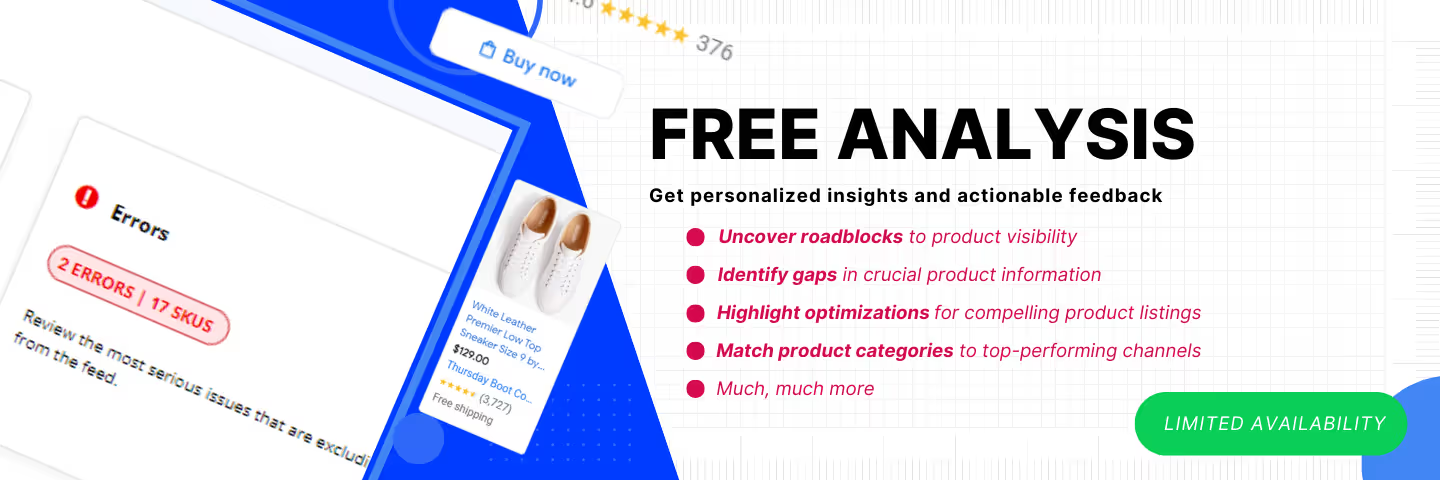Data is at the heart of every ecommerce business. It powers your transactions, fuels customer interactions, and keeps your operations running smoothly. But how secure is that data?
Cyber threats like ransomware, phishing scams, and supply chain vulnerabilities are becoming more common. Yet, many businesses unknowingly take risks by using outdated security practices or overlooking key weak spots.
This guide will help you protect sensitive customer information, secure your operations, and reduce the risk of disruptions. Let’s explore practical strategies to keep your ecommerce business safe and running smoothly.
Securing Data Across Leading Ecommerce Platforms
Modern ecommerce businesses operate across a range of platforms, including Google Ads, Shopify, eBay, Facebook Ads, and Instagram Ads. Managing and securing data within these ecosystems is vital for maintaining a competitive edge and protecting sensitive customer information.
Strengthening Security for Devices and Locations
Securing devices and access points used in ecommerce operations requires strategic planning and reliable tools:
- VPNs safeguard internet connections, ensuring data remains secure during transmission.
- Mobile Device Management (MDM) tools like Microsoft Intune and Google Workspace allow businesses to monitor and protect employee devices remotely.
- Cloud-based security solutions offer scalability and continuous protection, making them ideal for dynamic, distributed environments.
These solutions address the unique challenges posed by remote and multi-location work setups.
Implementing Zero Trust for Employee Access
The Zero Trust security model is an essential framework for managing employee access:
- Default limited access ensures users can only access the resources necessary for their roles.
- Continuous verification strengthens security by regularly authenticating users and devices.

Combining these practices with regular reviews of permissions minimizes the risk of unauthorized access and internal vulnerabilities.
Securing Cloud Platforms
Cloud platforms play a central role in ecommerce operations, and their security cannot be overlooked. Best practices include:
- End-to-end encryption to protect data both during transmission and while stored.
- Multi-factor authentication (MFA) to prevent unauthorized access.
- Regular cloud security audits to identify and mitigate potential vulnerabilities.
Adopting these measures ensures your cloud systems remain a reliable backbone for your business.
How to Keep Your Ecommerce Data Safe on Every Employee Device
Mobile devices are indispensable for ecommerce but come with inherent risks. To address these:
- Leverage MDM tools like Microsoft Intune or Google Workspace to remotely manage and wipe data on employee devices.
- Enable device encryption to secure sensitive information against unauthorized access.
These strategies help maintain control over critical data, even in device loss.
[To understand why structured data matters so much, check out GoDataFeed’s guide on clean product data].

The Hidden Heroes: How AI Defends Your Ecommerce Data Around the Clock
AI-powered tools are transforming security in ecommerce by providing:
- Real-time threat detection to identify unusual activities and potential breaches instantly.
- Predictive analysis to anticipate vulnerabilities before they escalate.
- Automated responses to quickly contain threats and prevent further damage.
By incorporating AI-driven solutions, businesses can enhance their resilience against evolving cyber threats.
Ensuring Compliance with Data Privacy Laws
Data privacy laws such as GDPR and CCPA/CPRA demand strict adherence to protect customer information. Key steps to ensure compliance include:
- Conducting regular audits to align data practices with legal requirements.
- Publishing transparent privacy policies to build customer trust.
- Establishing systems for data subject access requests (DSARs) to handle inquiries efficiently.

These actions help you avoid penalties and strengthen your brand’s reputation. For a deeper dive into GDPR best practices, check out this guide from GoDataFeed.
How to Shield Your Ecommerce Operations from Ransomware Attacks
Ransomware attacks can devastate ecommerce businesses. Protective measures include:
- Regular backups stored in secure locations to ensure rapid recovery.
- Employee education to recognize and avoid phishing attempts or malicious links.
- Endpoint protection software to block ransomware before it executes.
These strategies minimize downtime and financial losses in the face of such attacks.
Mitigating Supply Chain Vulnerabilities
The growing reliance on third-party software has increased the risk of supply chain attacks. To reduce exposure:
- Vet vendors thoroughly to ensure robust security practices.
- Audit integrations regularly to identify vulnerabilities in third-party tools.
- Apply Zero Trust principles to limit the access of third-party services.
Proactive management of supply chain risks strengthens overall security.

Raising Awareness of Phishing and Social Engineering
Human error remains a significant risk in data security. Effective measures include:
- Regular employee training to help staff recognize phishing emails and social engineering attempts.
- Simulated phishing tests to reinforce awareness and improve vigilance.
- Simple reporting systems to encourage swift action on suspicious activities.
Reducing human error is one of the most cost-effective ways to enhance security.
Implementing Stronger Password Policies
Strong passwords are a cornerstone of access control. Recommended practices include:
- Using password managers to create and store complex, unique passwords securely.
- Enabling Two-Factor Authentication (2FA) for all critical systems.
- Requiring regular password updates to reduce the impact of potential breaches.
These steps ensure a robust foundation for data protection.
Establishing Backup and Disaster Recovery Plans
A well-defined disaster recovery plan is essential for maintaining continuity during emergencies. Key elements include:
- Automated backups to safeguard critical data and ensure accessibility.
- Testing recovery processes to confirm systems can be restored efficiently.
- Comprehensive recovery documentation to guide teams in addressing a range of potential crises.
Preparedness is key to minimizing downtime and operational disruptions.
Final Thoughts
Keeping your online store safe can feel overwhelming, but it doesn’t have to be. By using the right tools and taking the right steps, you can protect your business and build trust with your customers.
A reliable tool like GoDataFeed makes managing your data easier and more secure. It helps you keep your product information accurate and synced across platforms while reducing the risk of mistakes. With fewer worries about data security, you can focus on growing your business and serving your customers.



.png)

%20).png)

%20).png)